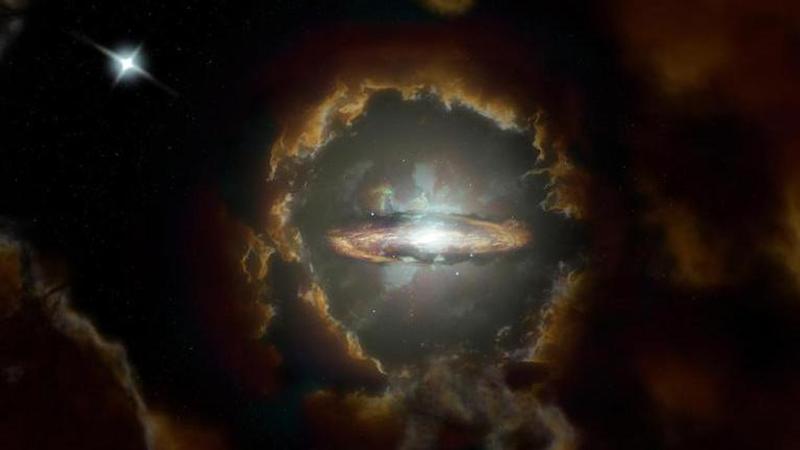Published 05:49 IST, May 24th 2020
'Wolfe Disk': Huge rotating disk galaxy in distant universe baffles astronomers
Astronomers at ALMA Observatory have discovered a huge rotating disk galaxy that is similar to the Milky Way and rotates at 272 kilometres per second.

Astronomers have discovered a huge rotating disk galaxy in the distant universe. According to researchers at Atacama Large Millimeter/submillimeter Array (ALMA) Observatory in Chile, the massive rotating disk galaxy was formed at least 12.5 billion years ago when our universe was only a tenth of its current age. However, the new discovery is challenging how astronomers perceive the concept of galaxy formation.
The newly spotted disk has been nicknamed as ‘Wolfe Disk’ after the late astronomer Arthur M Wolfe and is called Galaxy DLA0817g. According to published research, the ‘most distant rotating disk’ is spinning at 272kms per second and is similar to the Milky Way in its shape.
The research said, “The discovery of the Wolfe Disk provides a challenge for many galaxy formation simulations, which predict that massive galaxies at this point in the evolution of the cosmos grew through many mergers of smaller galaxies and hot clumps of gas.”
‘Unambiguous’ evidence
The researchers have also observed the mass of the Wolfe Disk is 70 billion times of our sun. Researchers have believed that stable galaxies like Milky Way with structured disk were formed six billion years after the Big Bang. However, the new observation is an “unambiguous” proof that galaxies were formed 1.5 billion years after the phenomenon, according to lead author Marcel Neeleman of the Max Planck Institute for Astronomy in Heidelberg, Germany.
“While previous studies hinted at the existence of these early rotating gas-rich disk galaxies, thanks to ALMA we now have unambiguous evidence that they occur as early as 1.5 billion years after the Big Bang,” said lead author Marcel Neeleman.
“Most galaxies that we find early in the Universe look like train wrecks because they underwent consistent and often ‘violent’ merging,” he explained. “These hot mergers make it difficult to form well-ordered, cold rotating disks like we observe in our present Universe.”
Image Source: almaobservatory.org
Updated 05:49 IST, May 24th 2020



